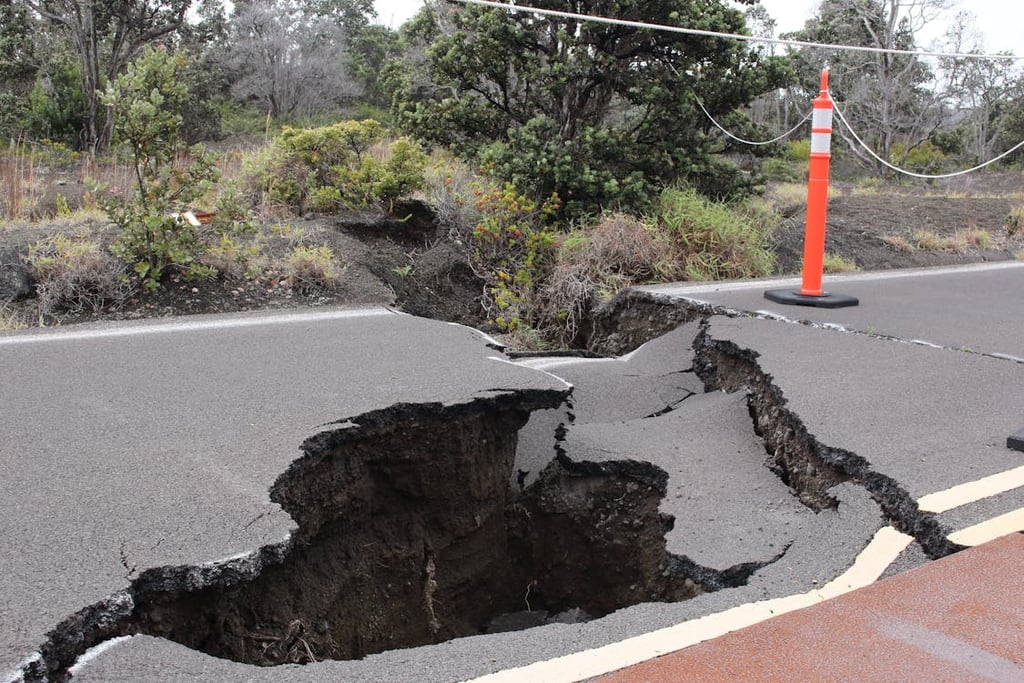Understanding Earthquakes: Causes, Precautions, and Safety Measures
Earthquakes are one of the most powerful natural phenomena, capable of causing significant destruction and loss of life. Understanding why they occur and knowing how to prepare and stay safe can make a crucial difference. This comprehensive guide explores the common reasons behind earthquakes and outlines essential steps for precautions and safety during these events.
SUPERNATURALS


What is an Earthquake?
An earthquake is the shaking of the surface of the Earth resulting from a sudden release of energy in the Earth's lithosphere that creates seismic waves. Earthquakes can vary in size from those that are so weak that they cannot be felt to those violent enough to toss people around and destroy whole cities. The seismicity, or seismic activity, of an area refers to the frequency, type, and size of earthquakes experienced over a period of time.
Common Causes of Earthquakes
Earthquakes are primarily caused by the following geological processes:
1. Tectonic Plate Movements
The Earth's crust is divided into several large and small tectonic plates that float on the semi-fluid asthenosphere beneath them. The movement of these plates can cause earthquakes in various ways:
Convergent Boundaries: Where two plates collide. This often results in one plate being forced beneath the other, a process known as subduction. This can cause powerful earthquakes, such as those commonly experienced in the Pacific Ring of Fire.
Divergent Boundaries: Where two plates move away from each other. This movement creates gaps that can cause earthquakes, often less powerful than those at convergent boundaries.
Transform Boundaries: Where two plates slide past each other horizontally. The friction between the plates prevents them from sliding smoothly and when the stress overcomes the friction, an earthquake occurs. The San Andreas Fault in California is a famous example.
2. Volcanic Activity
Earthquakes often accompany volcanic eruptions. The movement of magma within the Earth's crust can exert pressure on surrounding rocks, causing them to fracture and create earthquakes. These are known as volcanic earthquakes and can occur before, during, or after a volcanic eruption.
3. Human Activities
Certain human activities can induce earthquakes, known as induced seismicity. These include:
Mining: Removing large amounts of earth can destabilize the ground and cause tremors.
Reservoir-Induced Seismicity: The weight of water in large reservoirs can create enough pressure to induce seismic activity.
Geothermal Energy Extraction: The process of extracting geothermal energy can also cause minor earthquakes.
Hydraulic Fracturing (Fracking): This process of extracting natural gas by injecting high-pressure fluid into subterranean rocks can induce earthquakes.
4. Other Natural Processes
Isostatic Rebound: The Earth's crust can deform in response to the melting of ice sheets, causing earthquakes as it adjusts.
Landslides: Large landslides can also induce minor earthquakes.
Precautions and Safety Measures During Earthquakes
Preparing for an earthquake involves understanding the risks, preparing your home and workplace, and knowing what to do during and after an earthquake. Here are some common precautions and safety measures:
Before an Earthquake
1. Create an Emergency Plan
Family Communication Plan: Ensure all family members know how to contact each other in case of an emergency.
Meeting Point: Designate a safe meeting place outside your home.
2. Build an Emergency Kit
Include essential items such as:
Water (one gallon per person per day for at least three days)
Non-perishable food
Flashlight and extra batteries
First aid kit
Medications
Whistle (to signal for help)
Dust masks
Wrench or pliers (to turn off utilities)
Manual can opener
Local maps
Cell phone with chargers and backup battery
3. Secure Your Home
Heavy Objects: Secure heavy furniture, appliances, and electronics to walls.
Breakables: Store breakable items in low, closed cabinets with latches.
Utilities: Know how to shut off gas, water, and electricity.
4. Structural Reinforcement
Foundation: Retrofit your home to better withstand earthquakes, such as bolting the house to its foundation.
Walls: Reinforce walls and install steel frames where necessary.
During an Earthquake
1. Drop, Cover, and Hold On
Drop: Get down on your hands and knees to prevent being knocked over.
Cover: Protect your head and neck under a sturdy table or desk.
Hold On: Hold on to your shelter until the shaking stops.
2. If Indoors
Stay inside and away from windows, exterior walls, and doors.
Do not use elevators.
3. If Outdoors
Move away from buildings, streetlights, and utility wires.
Find an open area and stay there until the shaking stops.
4. If in a Vehicle
Stop as quickly and safely as possible, staying in the vehicle.
Avoid stopping under overpasses, bridges, or near buildings and trees.
5. If Trapped
Do not light a match or use a lighter.
Cover your mouth with a handkerchief or clothing.
Tap on a pipe or wall to signal rescuers.
After an Earthquake
1. Check for Injuries and Damages
Provide first aid where needed.
Be aware of potential hazards such as gas leaks, damaged electrical wires, and unstable structures.
2. Communicate
Use text messages or social media to let loved ones know you are safe.
Tune in to local news for emergency information and instructions.
3. Avoid Hazards
Stay away from damaged buildings and roads.
Do not enter your home until it has been inspected for safety.
4. Be Prepared for Aftershocks
These can occur minutes, days, or even months after the main quake.
Follow the same precautions as during the main earthquake.
Conclusion
Understanding the causes of earthquakes and knowing how to prepare, respond, and recover can significantly reduce the risks associated with these natural disasters. By creating a family emergency plan, building an emergency kit, securing your home, and learning safety procedures, you can increase your chances of staying safe during an earthquake. Awareness and preparedness are key to minimizing the impact of earthquakes on your life and community.
By staying informed and proactive, you can help protect yourself, your loved ones, and your property from the potentially devastating effects of earthquakes. Remember, the key to earthquake safety is preparation and vigilance. Stay safe!


